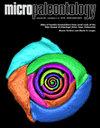加勒比海东南部底栖有孔虫生物地理学
IF 1.6
4区 地球科学
Q3 PALEONTOLOGY
引用次数: 0
摘要
东加勒比海并不是到处都是营养不良的。它受加勒比海洋流的影响,加勒比海洋流是圭亚那洋流的延伸,向西北方向流过海洋。它还受到奥里诺科河流出的影响,奥里诺科河产生的低气压羽流被加勒比海洋流带过海洋,以及当地的上升流,这发生在不同的焦点。本文采用非度量多维尺度(NMDS)研究了这种海洋复杂性对浅海到深海底栖有孔虫分布的影响,基于物种存在/缺失。奥里诺科河羽流范围内的地点(奥里诺科河近海,特立尼达东海岸海域[ECMA],特立尼达北岸海域[NCMA],多巴哥西北部近海,Bequia)被NMDS紧密地聚集在一起,尽管NCMA受到轻微上升流的影响,Bequia只是季节性地位于羽流范围内。帕里亚和阿拉亚半岛地区,虽然地理上很近,都受到上升流的影响,但并没有紧密地聚集在一起。这表明两个上升流焦点引起了一定的生物地理分离。托尔图加岛(Isla La Tortuga)沐浴在富营养化的水中,远离富营养化的奥里诺科河羽流(Orinoco Plume)。在与奥里诺科河羽(Orinoco Plume)相邻的帕里亚半岛(Paria Peninsula)上涌遗址,发现了17种波利维纳(Bolivina),这是该属物种最丰富的遗址,而托尔图加岛(Isla La Tortuga)只发现了4种。特立尼达NCMA,同样是上升流的地方,出现了玻利维亚物种数量第二高的地方,有12种。德尔塔平台的位置远高于其他所有地点,这反映了它在奥里诺科河柱之外的深海位置。本文章由计算机程序翻译,如有差异,请以英文原文为准。
Benthic foraminiferal biogeography in the southeast Caribbean Sea
The SE Caribbean Sea is not ubiquitously oligotrophic. It is subject to the Caribbean Current, which is an extension of the Guiana Current and flows NW across the sea. It is also impacted by outflow from the Orinoco River, which produces a hypopycnal plume that is transported across the sea by the Caribbean Current, and by local upwelling, which occurs at distinct focuses. This paper uses non-metric multidimensional scaling (NMDS) to examine the impact of this oceanographic complexity on the distributions, based on species presence/absence, of neritic to upper bathyal benthic foraminifera. Sites within the ambit of the Orinoco Plume (Orinoco offshore, Trinidad East Coast Marine Area [ECMA], Trinidad North Coast Marine Area [NCMA), offshore NW Tobago, Bequia) are closely grouped by NMDS, despite the NCMA being subject to minor upwelling and Bequia only seasonally laying within the plume. The Paria and Araya Peninsula areas, though geographically close and both subject to upwelling, do not cluster closely. This indicates that the two upwelling focuses induced some biogeographic separation. The Isla La Tortuga, being bathed with oligotrophic water, plotted far from the eutrophic Orinoco Plume sites. The upwelling Paria Peninsula site, adjacent to the Orinoco Plume, yielded seventeen species of Bolivina (the greatest species richness for this genus of any of our sites), whereas Isla La Tortuga yielded only four. The Trinidad NCMA, likewise a site of upwelling, presented the second highest number of species of Bolivina, yielding twelve. That the Plataforma Deltana site plotted far from all others reflects its bathyal position beyond the Orinoco Plume.
求助全文
通过发布文献求助,成功后即可免费获取论文全文。
去求助
来源期刊

Micropaleontology
地学-古生物学
CiteScore
3.20
自引率
6.70%
发文量
18
审稿时长
>12 weeks
期刊介绍:
The Journal of Micropalaeontology (JM) is an established international journal covering all aspects of microfossils and their application to both applied studies and basic research. In particular we welcome submissions relating to microfossils and their application to palaeoceanography, palaeoclimatology, palaeobiology, evolution, taxonomy, environmental change and molecular phylogeny. Owned by The Micropalaeontological Society, the scope of the journal is broad, demonstrating the application of microfossils to solving broad geoscience issues.
 求助内容:
求助内容: 应助结果提醒方式:
应助结果提醒方式:


